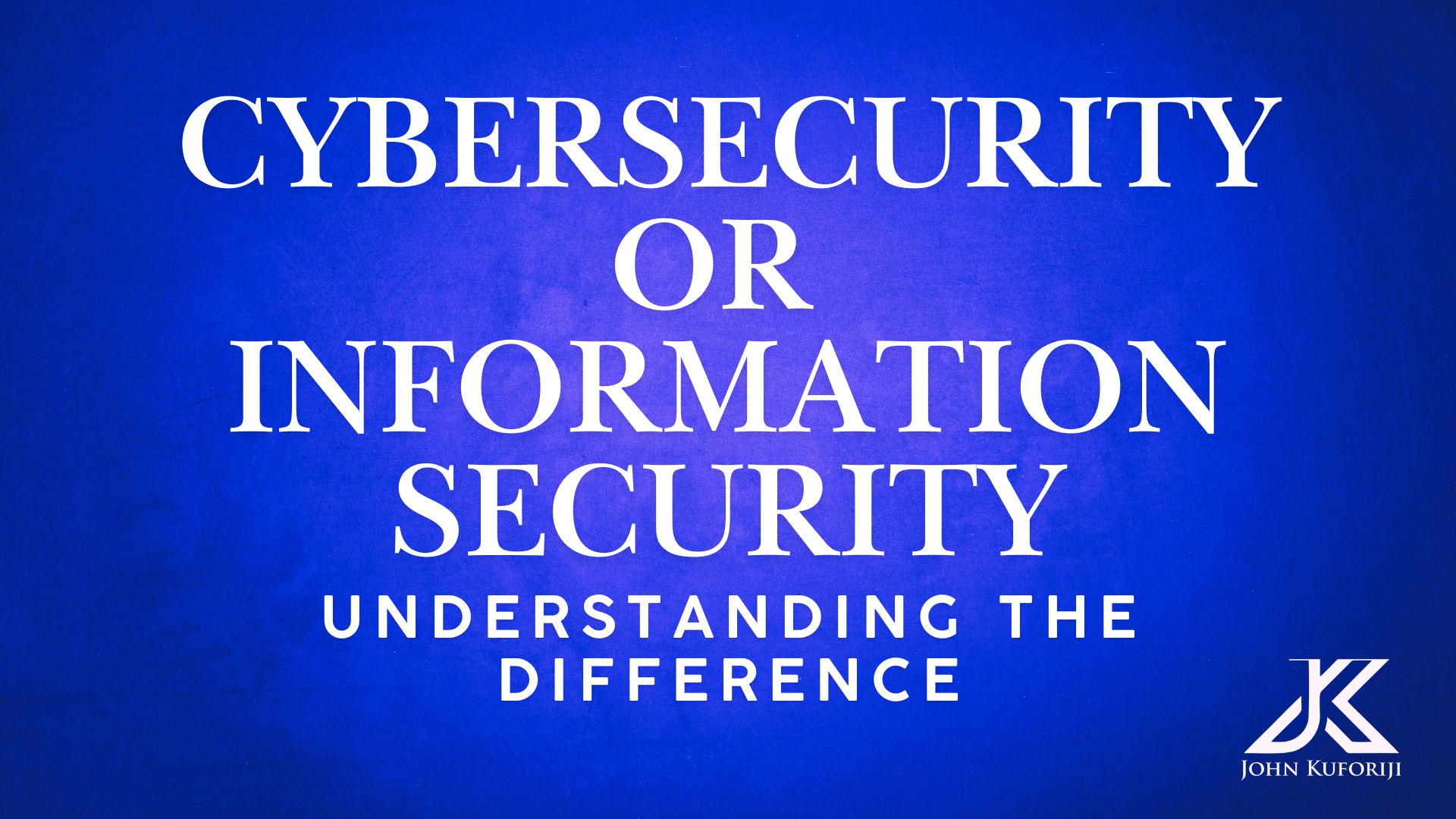If you’ve had the opportunity to be close to a set of identical twins, you understand the challenges of distinguishing one from the other. I attended high school with a few twins, and it took me some time to tell Kelvin apart from Kenneth. Similarly, in the world of technology and data protection, terms like cybersecurity and information security are often used interchangeably. In fact, they can be considered identical twins—similar, yet not the same. Think of them as two sides of the same coin: connected but distinct, each with a unique focus. Let’s explore their differences and why they matter.
Defining the Terms
What is Cybersecurity?
Cybersecurity is like the guard at the gate, protecting the digital realm. It focuses on defending systems, networks, and data from cyber threats such as hacking, malware, and ransomware. Cybersecurity is all about safeguarding the digital space.
What is Information Security?
Information security (or infosec) is the umbrella term that includes cybersecurity. It’s like the vault where all valuable assets are stored—whether they’re digital or physical. Infosec ensures that all types of information (paper documents, verbal communication, or digital files) are protected from unauthorized access or destruction.
Key Differences Between Cybersecurity and Information Security

An Analogy to Simplify It
Imagine a high-security building:
- Cybersecurity is like the alarm system and guards protecting the digital locks and cameras connected to the network.
- Information Security is like the overall security plan for the building—covering everything from physical locks on doors to protocols for who can enter certain rooms.
How They Work Together
While cybersecurity focuses solely on the digital world, it’s an integral part of information security. You can think of information security as the strategy, and cybersecurity as one of the tools used to implement it. For example:
- An organization’s information security policy might require protecting customer data.
- Cybersecurity measures, such as encrypting databases and using firewalls, enforce that policy for digital data.
Why the Distinction Matters
Understanding the difference is crucial for businesses and individuals:
- Strategic Planning: Organizations can design comprehensive security plans that address both physical and digital risks.
- Resource Allocation: Knowing the scope of each helps allocate the right tools and personnel—cybersecurity experts for digital threats, and security policies for broader risks.
- Compliance: Regulatory standards often require attention to both (e.g., HIPAA for healthcare data or GDPR for personal information).
Two Sides of the Same Coin
Cybersecurity and information security are complementary but distinct. Cybersecurity focuses on defending the digital world, while information security ensures that all forms of information—digital, physical, or verbal—are protected. Together, they form a robust defense system in today’s interconnected world.
Whether you’re a business leader, an IT professional, or just someone curious about staying safe online, understanding the distinction can help you better protect what matters most: your information.

